The steady recovery for Canada’s language sector continued in 2023 according to the full-year data released by Languages Canada with members reaching three quarters of pre-Covid student numbers, but the association is calling for “corrective action” to aid further growth.
Headline data: The annual Languages Canada / Langues Canada (LC) report, based on the responses of 189 member centres and conducted by research partners Bonard, shows that LC schools welcomed 112,564 international students in 2023 – a 15 per cent increase compared with the previous year and a recovery rate of 75 per cent against 150,112 students in 2019.
Student weeks, meanwhile, reached 1,234,447, an increase of 12 per cent compared with 2022 and a recovery of 82 per cent on 2019. The average stay decreased slightly to 11 weeks in 2023.
The direct economic contribution from Language Canada members in 2023 was CAN$1.19 billion in 2023, the association estimated, which was growth of 30 per cent compared with 2022 but still 20 per cent below the 2019 value of CAN$1.5 billion.
The trajectory of student numbers and weeks for LC members 2019-2023. Source - Languages Canada/Bonard.
However, there was a disparity in the recovery rate of different types of providers within the Languages Canada membership, as public sector providers recovered to 57 per cent of 2019 student numbers, while private sector members reached 83 per cent, the association said.
Source markets: Japan remained the top source country for Languages Canada members in 2023 with 14,520 students, a 16 per cent increase over the previous year, followed by Mexico with 13,572 students (+15 per cent), and Brazil on 12,566 students (+two). The top five was completed by China (8,647 students, +13 per cent) and South Korea (8,002, +23).
Among the top five source countries, Mexico had the highest rate of recovery against 2019 student numbers at 91 per cent, followed by Japan on 82 per cent. However, Brazil was lagging behind on only 55 per cent recovery. Brazilian agency association BELTA has commented on visa issues with Canada in 2023 prompting some students to choose alternative destinations.
Twenty-six source markets exceeded pre-Covid levels in 2023, including the Latin American countries of Peru (275), Ecuador (271), Chile (164), and Colombia (164).
Domestic students, who are a key source market for French language courses, also surpassed pre-Covid levels with a 127 per cent recovery rate.
Recruitment channels: Agents remained the primary method of sourcing students, accounting for 63 per cent of bookings in 2023 – a slightly lower ratio than 66 per cent in 2022. Agent recruitment was higher at private sector members at 67 per cent.
Visa types and issues: Visitors (no visa required) accounted for the largest proportion of students in 2023 (45 per cent), followed by Temporary Resident Visa (TRV), which was the largest growing route and surpassed pre-Covid levels (22 per cent share), and Study Permits (21), which actually decreased by 1,201 compared with 2022.
The top source markets for LC members in 2023. Source - Languages Canada/Bonard.
Languages Canada estimated that a minimum of 7,150 students held up travel plans last year because of visa issues; 4,479 due to study permit delays and 2,671 due to TRV delays.
Vietnam was the source market with the highest number of visa refusals (404), followed by Colombia (381), Brazil (341), India (282) and Turkey (222).
Course type: General English/French was the most popular programme type, accounting for 71 per cent of students, followed by pathways (14 per cent) and English/French for academic purposes (eight).
The most common visa types for LC members in 2023. Source - Languages Canada/Bonard.
Provinces: Ontario had the largest share of students with 46,423 students, a 49 per cent increase compared with the previous year. British Columbia was the next largest but experienced a year-on-year decrease of three per cent to with 26,209 students, and Quebec was third with 13,190 students (+34 per cent).
Other findings: The average weekly tuition fee in 2023 was CAN$348, which was a CAN$25 increase over the previous year, while the weekly accommodation fee jumped by CAN$45 to CAN$342.
Homestay was the most popular type of accommodation, chosen by 58 per cent of students overall, and 60 per cent in the private sector.
The authors estimated that there was a shortage of 1,710 beds during the peak June, July and August period. In July, demand exceeded supply by 27 per cent.
French language enrolments: French language members welcomed 8,601 students in 2023, an increased of 58 per cent over the previous year, a recovery of 83 per cent compared with 2019.
Mexico was the top source country for French language programmes with 1,605 students, followed by Canada itself (1,433), USA (631), Colombia (609) and Brazil (573).
Challenges: When asked about challenges faced, visa processing times and student difficulties in applying for visas was the most common issue, cited by 60 per cent of respondents, followed by visa refusals (37), discounts from competitors (35) and staff recruitment/retention (32).
Lobbying for policies: Gonzalo Peralta, Executive Director of Languages Canada, said, “The sector is recovering, albeit slowly. We saw an increase in French language students from Canada. Diversity remains strong.”
But he added, “Our French language programs and our public sector (university and college) official languages programs have been in a severe decline since 2019. Obviously, much needs to be done to correct the path of this sector towards a sustainable direction and position.”
Gonzalo added that the numbers become even more concerning as the sector faces continued adversity in 2024 due to post secondary study permit caps imposed by the Canadian government.
In the foreword to the report, he said that government policy had been the “principal, and more enduring reason” for the decline of the sector, and that a “series of policy missteps had eroded the sustainability of a sector that exemplified Canada’s values of diversity and inclusion”.
Languages Canada said it was continuing to advocate for “more carefully targeted policies” to help control growth in the government’s goal of curbing growth in international student numbers “without putting the country’s official language programs, which are in decline, at risk”.




